Information Technology Reference
In-Depth Information
(a)
(b)
Fig. 8.3.
Canada Post Data Matrix original images: (a) high-contrast address window variant;
(b) low-contrast red ink variant.
challenging. The purpose of the experiments is to demonstrate that the structure
present in the image of the code can be learned and used for binarization.
A database for training and testing the binarization network was provided by
Siemens ElectroCom Postautomation GmbH. It consists of 1,209 gray-scale images
of size 216
×
216 containing a Data Matrix each. 515 of the images belong to the
high-contrast address window variant (see Fig. 8.3(a)), and 694 low-contrast ex-
amples have been printed with red ink (see Fig. 8.3(b)). The high-contrast images
can be binarized using simple thresholding methods, while the binarization of the
low-contrast images is more difficult.
8.3 Adaptive Threshold Binarization
So far, simple global threshold techniques have been used to binarize the Data Ma-
trix images. However, due to non-uniform lighting for some images it is difficult to
determine a single global threshold that separates black pixels from white pixels.
One such example can be seen in Figure 8.4(a), where the background in the upper
right corner is much darker than in the rest of the image. To correct for this, the in-
tensity of the background
B
(
i,j
)
is estimated for each location
(
i,j
)
by computing
[
I
(
i
+
∆
i
,j
+
∆
j
)
−k
(
∆
i
,∆
j
)
k
]
,
B
(
i,j
) =
max
k
(
∆
i
,∆
j
)
k≤r
(8.1)
where
I
(
i,j
)
is the intensity of the original image, and radius
r
= 15
determines the
smoothness of the estimate. Figure 8.4(b) shows the estimated background intensity
for the example.
The estimated background is used to correct the image intensity:
C
(
i,j
) = min(255
,
max(0
, I
(
i,j
) + 128
−
B
(
i,j
)
/
2 ))
.
(8.2)
The corrected example image
C
(
i,j
)
is shown in Fig. 8.4(c).
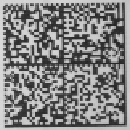
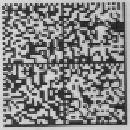
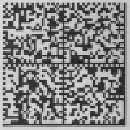
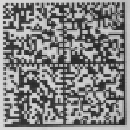
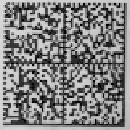
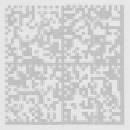
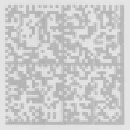
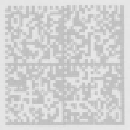
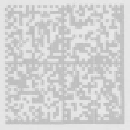

Search WWH ::

Custom Search